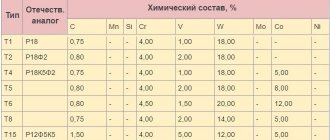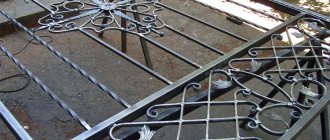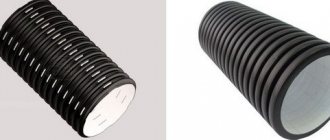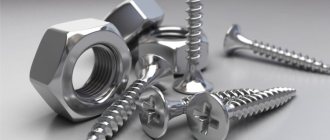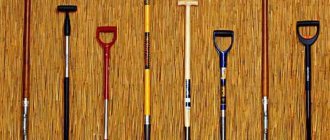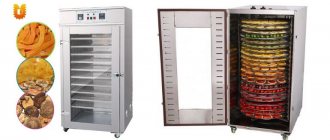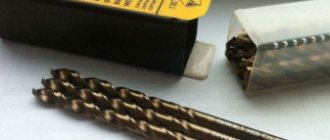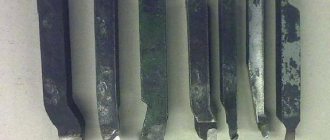Malt catalog Mill catalog
The transition from extracts to pure grain brewing is a natural process of evolution for any home brewer, who approaches the matter not only from a practical, rational side, where beer is only a consumer product, but also with a bit of creativity, a subtle understanding of the processes and the influence of each individual factor on characteristics of the drink. And often, when you take that important step towards All Grain, you suddenly begin to realize that you can save a lot of money if you buy the malt you use most often in bags at once, rather than by the kilo each time you brew. . In addition, it is also a matter of convenience. But when you buy malt in large quantities, you are faced with another problem - you will have to grind it yourself, because you cannot store malt already ground in a store for a long time, it oxidizes. It is this important technological process that this material is devoted to.
Communities › DIY › Blog › Two-roller malt mill - “A Rogue’s Dream”
Hello people) Check out my wild malt mill)))
What is this for?! for home brewing! Made as cheaply as possible crookedly and lazily with a fierce trash style
From materials: For rollers - bends or adapters for barrel diameter 1
In this form, the mill worked perfectly and I brewed beer a couple of times using this mill, later it was modified
And in this form it continues to work and grind malt.
You may ask why all this and why is this so? and I will answer...
My craft cost a little more than 500 rubles... despite the fact that it completely justified itself, showed excellent results and delicious beer at the end
Kinds
Types of machines according to operating principle:
Hammer
In this device, the parts that process raw materials are mounted on the rotor. Its rotation is carried out in the receiving hopper.
Rotary
In this grain crushing plant, the working chambers are made using durable material. The elements that crush cereal crops are in contact with the walls of the bunker. The process is carried out until they are converted into the smallest fractions.
Disk
In this device, the knives are fixed on the shaft. This happens due to specially designed disks.
Roller
With the help of this apparatus, grain is both crushed and ground. The main part consists of grooved rollers capable of processing wet material. Therefore, the grain, which is dry, is moistened in water in advance.
see also
Comments 127
Nothing rogue! Handmade is always in trend! Great job! I keep dreaming of trying to brew beer, but somehow I just can’t get around to getting poisoned by my own product)
You definitely won’t get poisoned, the main thing is to try to do everything cleanly and everything will work out!)))
Well, you have a good hobby, and you also put some ingenuity into it. But I didn’t attach beer recipes to the topic. JOINT! We need to fix it))))
for recipes for the beer that I brewed, welcome to my YouTube channel))) and here is a topic about hand-wringing and a mill))))
Well, you have a good hobby, and you also put some ingenuity into it. But I didn’t attach beer recipes to the topic. JOINT! We need to fix it))))
But please look for recipes on the Internet, no one will tell you their recipes. It will take more than one month to achieve the taste you like. or even a year. We spent about a year. so go for it, and remember that a lot depends on the temperature.
Mill fire)). What about options like a coffee grinder or blender that don’t work?
they produce a lot of flour, and flour is a problem with filtration! and with such a mill there is practically no flour, while the malt is ground quite finely and gives everything tasty and healthy to the beer))
where to read information on making beer at home and recipes
beer.rf there is a lot of stuff here. and just Google))) there are a lot of different sites right now
pass, definitely pass))) how do you remove the sediment, is there a CCT?
What is TsKT? And what does it mean to remove sediment? Maybe we use different terms.
here is the cylindroconical tank, skimming the beer from yeast after fermentation... naturally not a complete cleaning, because for homemade beer without pasteurization, yeast is a natural preservative
Simply pour it into another bottling container. The yeast remains at the bottom.
well, that is, it turns out before bottling - overflowing for additional fermentation, this is usually called that))) is also an option when there is no CCT))) I don’t have a crap either, but with a CCT it would be much more convenient all this) it’s a pity that they cost so much
Well, we immediately pour and bottle. You can also use it for further fermentation, we call it secondary.
A good thing for torture Saw 7.)))
If these mills are so in demand, then I am ready to make more productive ones at a lower price
Well, they are in great demand among brewers, and the three-roller ones sell for almost 15k, Google this topic and you’ll be amazed at the prices
What can they come up with when they want to eat?))))
Well, usually when you want to eat, you start to damage the barbecues and smokehouses))) but here, after the meal, you also need to drink something))))
He started a good deal. Great. I myself am a big beer lover, and my wife once gave me 23 coins for a home brewery. They cost about 7 thousand a long time ago. But the machine also likes to eat, although not beer. The money scattered, but the dream of homemade beer remained. If it's not difficult, send me the link to the channel. And tell me honestly, how is homemade beer?
homemade beer is tasty and not expensive, the main thing is to learn to feel the very essence of the process and collect the necessary minimum of equipment and materials
I didn’t even know that you could drink beer at home... Mill-vesch! :))
Think about it, I didn’t know either))) at first I just watched YouTubers and then when I saw how some of them cook in an ordinary saucepan, I went nuts and decided to try it too! Well, as you can see, something happened)))
I will do everything! ))) We need to see where they sell malt...
malt.ru/ very cheap but still in bulk))) from 35 rubles per kg of malt and 4 kg of malt =
17 liters of beer... that's how it works out...
Understood thanks! I’ll definitely cook it and post it on the blog! You need to massage your liver...)))
the main thing is it’s cheap and it works))) while I was reading the comments I drank a glass of homemade beer))) guys. you made my evening a little more fun))))
I’m not really a drinker, but recently there was a video about beer and plastic bottles - you’ll live the longest!) and with a kick)
Give me a link to the channel please.
But what if you make not oblique cuts like yours on a 3/4 piece of pipe, but straight vertical ones? maybe it will be better?
3/4 is not enough, I have 1 and I would like more... straight notches MB and better xs, I don’t know why I wanted to do that))))
from the photo it seems that 34. didn’t understand 1?
3/4 is not enough, I have 1 and I would like more... straight notches MB and better xs, I don’t know why I wanted to do that))))
not finished, sorry 12 inches =15 mm 34 inches =20 mm 1 inch = 25mm
Yes exactly! I would have bought more, but there was nothing in the nearest stores))) these 2 stubs were sold for 200 rubles each, like an adapter for a barrel or something like that))))
Tin, it was cheaper to take 40 stainless steel =(
oh, if only they sold at least something in our stores... but I really didn’t want to go to the outskirts to large bases and look there either)))
Master-Alex666, find 2 sprockets to turn 2 rollers with 1 handle, and try to reduce the gap, I noticed uncracked grains! I advise you to find stars with fine teeth and wide ones (0.8-2 cm), large teeth can easily jam!
Believe me, in order to grind 4 kg of malt, that’s exactly how much it takes me for one brew. it’s easy to twist together))) especially since mom is for it because it’s kind of interesting and cool))) that’s why there are 2 handles)))
but about the gap, it’s probably not about the gap, but about the fact that there is a runout and the pipes with threads on the studs are not very well centered))) and all because laziness))))
Types and factory features of crushers
A malt crusher can initially be domestic or industrial. The first option is distinguished by its smaller dimensions and modest performance. Nevertheless, the speed of operation of this unit is sufficient to obtain crushed products in quantities sufficient for household needs. Industrial malt grinders are used exclusively in large breweries. They are capable of processing up to several tons of products daily.
Industrial malt crushers are distinguished by their almost identical factory design. The difference between them lies only in the main built-in operating mechanism.
A household grain crusher for malt is simpler in its design and operating principle. Thanks to this, it is easier for the operator to maintain it and independently troubleshoot the unit.
The most popular among owners of small home breweries are roller household grinders, which, depending on the type of drive, can be manual or fully automated. The operation of a roller crusher is based on the action of a movable factory shaft. During grain processing, it directs the material into the hole provided between it and the body of the unit. This principle of operation allows you to obtain a large amount of carefully ground malt without the physical effort of the operator.
Welded metal crusher
This model of grain crusher consists of:
Frame and drive assembly
It is recommended to make the frame from a durable pipe with a wall thickness of at least 4.5 mm. You can also use a metal corner. If you plan to move the device, then a pair of wheels are attached to the frame.
The drive consists of a tension mechanism, a pair of pulleys and belts. All these materials are purchased in a specialized store. A petrol or electric motor is equally suitable for this crusher. The difference is that a gasoline engine makes the structure heavier, but provides more power. Electric is lighter and easier to maintain. If the shredder is planned for stationary use, then it is better to choose an electric motor. The minimum recommended engine power is 2 kW.
Shaft and bumpers
The bumpers are made removable. The width of the hammer mechanism of four chippers is 9 cm. Hammers are made from steel sheet 6 mm thick. The shaft with knives and hammers installed on it is mounted on double-row bearings.
Receiving hopper and housing
The protective housing is manufactured together with the loading hopper. The dimensions depend on the dimensions of the main working units (hammers, cutters, motor). The thickness of the housing walls must be sufficient to withstand loads and dampen engine vibrations. If the engine has a power of 2 kW, then it is recommended to make the wall thickness from 4 mm.
A window is made at the bottom of the housing for unloading the finished crushed material, which is closed with a sieve. The loading hopper can be made of thinner metal. The shape of the grain receiver is often cone-shaped or rectangular. For convenience, the hopper is equipped with a hinged or removable lid.
Source
Types of household shredders
Household crushers of prepared malt are most often used to prepare delicious beer and high-quality homemade whiskey. A roller crusher is best suited for this. Depending on the number of working parts, this equipment can be of the following types:
- two-roller - simpler in its factory design. This type of unit has the lowest performance;
- three-roll mill-crusher for malt - it is equipped with an additional standard shaft, which initially allows you to grind the material with high quality and obtain a larger quantity of finished products.
Among the units of the second type, the Corona malt crusher mill is the most popular. It differs from many market analogues in increased productivity, increased reliability and solid efficiency when working with the hardest materials.
Grinding malt is not for beer
Many moonshiners may also be interested in the issue of grinding malt for whiskey. In one of our previous materials, we found out that whiskey differs from beer only in the distillation of fermented beer wort. The malt is used, the technology for preparing the wort is the same, therefore, the technological processes are similar and grain grinding should be approached using the methodology described above. As for using the malt mill for purposes other than its intended purpose, the limitations are only imposed by your imagination. The same burr mills are actively used for crushing legumes, nuts, seeds and small batches of grain. But roller mills can be used as a full-fledged device for grinding any grain, including flour for saccharification with enzymes or koji yeast. This has nothing to do with malt. To obtain flour, it is enough to set the minimum allowable gap between the rollers, but for this, of course, it is better to use special grain crushers.
How to make a reliable malt crusher?
To assemble a prepared malt grinder, the designer will need the following elements:
- 2 fully serviceable pulleys from pumps, dismantled from any VAZ car - they should play the role of shafts for the crusher;
- 2 metal axles on which the shafts will be installed - you can make them yourself or order them from a turning workshop;
- one-piece or dismountable metal body - several sheets of aluminum are suitable for its assembly;
- a saucepan that will play the role of a fence hopper;
- lever – necessary to drive the malt chopper.
After preparing everything you need, you can proceed directly to assembling the chopper.
To do this you need:
- Install and secure the shafts on the previously prepared axles. The finished mechanism must withstand vibrations and not emit extraneous sounds during rotation;
- Secure the chopper with the hopper in the middle part of the body. During installation, you need to make sure that the working mechanisms are located inside, and the rotary handle is on the outside of the aluminum case;
- After this you need to secure the pan. It should be located under the operating shafts of the unit.
The result is a manual crusher that can be used to process malt and other dry or wet grains.
During further operation, the operator must constantly monitor the operation of the rotary handle.
If squeaks occur, the mechanism will need to be lubricated. It is also important to keep your cutting knives sharp. If, after processing the malt, most of it remains uncrushed, then the knives need to be sharpened or replaced.
Grain crusher from a vacuum cleaner
To make a simple and reliable grain crusher, working but unused Soviet vacuum cleaners such as “Raketa” and “Saturn” are used.
The production of such a grain crusher is carried out as follows:
- The motor in the housing is removed from the vacuum cleaner.
- The chamber with the suction impeller is removed from the motor shaft.
- A round base is cut out of thick sheet steel.
- A hole is cut out in the center of the base for the motor shaft, and a hole is made on the side for the grain bin.
- The motor housing is secured to the base using screws and brackets.
- A trapezoidal pre-sharpened knife is attached to the motor shaft.
- A sieve made from an old saucepan with 4- or 5-mm holes in the bottom is attached under the knife.
Types of household shredders
Household crushers of prepared malt are most often used to prepare delicious beer and high-quality homemade whiskey. A roller crusher is best suited for this. Depending on the number of working parts, this equipment can be of the following types:
- two-roller - simpler in its factory design. This type of unit has the lowest performance;
- three-roll mill-crusher for malt - it is equipped with an additional standard shaft, which initially allows you to grind the material with high quality and obtain a larger quantity of finished products.
Among the units of the second type, the Corona malt crusher mill is the most popular. It differs from many market analogues in increased productivity, increased reliability and solid efficiency when working with the hardest materials.
Grain crusher performance
Productivity is the most important characteristic of grain crushers, which indicates the amount of grain they grind per hour (kg/h).
For homemade and factory models, the average is:
- Homemade units - up to 150-200 kg / h;
- Factory models - from 180 to 400-500 kg / h.
Moreover, in most cases, the productivity of factory crushers cannot be increased, while for any home-made unit this characteristic can be significantly improved by changing the power unit (engine) to a more powerful one.
How to make a reliable malt crusher?
To assemble a prepared malt grinder, the designer will need the following elements:
- 2 fully serviceable pulleys from pumps, dismantled from any VAZ car - they should play the role of shafts for the crusher;
- 2 metal axles on which the shafts will be installed - you can make them yourself or order them from a turning workshop;
- one-piece or dismountable metal body - several sheets of aluminum are suitable for its assembly;
- a saucepan that will play the role of a fence hopper;
- lever – necessary to drive the malt chopper.
After preparing everything you need, you can proceed directly to assembling the chopper.
To do this you need:
- Install and secure the shafts on the previously prepared axles. The finished mechanism must withstand vibrations and not emit extraneous sounds during rotation;
- Secure the chopper with the hopper in the middle part of the body. During installation, you need to make sure that the working mechanisms are located inside, and the rotary handle is on the outside of the aluminum case;
- After this you need to secure the pan. It should be located under the operating shafts of the unit.
The result is a manual crusher that can be used to process malt and other dry or wet grains.
During further operation, the operator must constantly monitor the operation of the rotary handle. If squeaks occur, the mechanism will need to be lubricated. It is also important to keep your cutting knives sharp. If, after processing the malt, most of it remains uncrushed, then the knives need to be sharpened or replaced.
Criteria and principles of good grinding
Milling malt is an important technological operation that has a great influence on further processes of wort preparation, in particular on the duration of saccharification, filtering the wort from spent grains and, of course, on the extract yield. The main task of crushing malt is to completely destroy the powdery body of the grain, called the endosperm, which will allow water and the enzymes transferred into it during saccharification to more fully interact with starch and other extract substances contained in the body of the sprouted grain. Of course, not everything is as simple as it might seem at first glance.
Good grinding of malt completely breaks down the endosperm of the grain into small pieces, while preserving the husk (the dense coating of the grain) with minimal damage. Breaking down the endosperm allows diastatic enzymes to access starches and convert them into soluble sugars during the mashing process. The floury part of the grain, which mainly contains starch (carbohydrates) and protein (nitrogenous substances), must be crushed as finely as possible so that the maximum amount of extractives can be extracted from it during the saccharification process. At the same time, the husk, which has retained its integrity as a result of grinding, will become a natural filter layer when pouring the saccharified wort into the fermenter. In addition, damaged husks, which primarily consist of cellulose and deposited organic and inorganic substances, can greatly degrade the aroma and taste of beer (especially as a result of overextraction of tannins, which impart astringency to the beer).
During malting, the grain of barley and any other grain crop is loosened unevenly, so the structure of the endosperm of the malted grain is different. In the embryonic part, closer to the base, the structure of the endosperm is looser and crushes easily, but the ends of the grain, which are usually not subject to enzymatic treatment, are quite problematic to grind. That is why crushed malt always consists of four main fractions: the husk itself, coarse grains, fine grains and flour. With husks it’s clear - the less damage, the better. Large grains, which are usually the very tips of the grain, are saccharified slowly. Small grains and flour lend themselves best to extraction. But it should be understood that a high content of flour in the mash will lead to clogging of the filtration system, even if the filtration layer of husks is quite dense. This is why you always need to find a compromise between grinding fine enough for a higher degree of extraction and keeping the fractions large enough for a more comfortable lautering of the mash. Be that as it may, grinding malt always begins with a mill.
Simple do-it-yourself grain crusher (drawings)
Oddly enough, you can crush grain at home no worse than in a factory. And sometimes it happens that the result can be even better. In this material, you will find everything to make such a device as a grain crusher with your own hands: drawings, operating principles, various nuances.
Using this device, a bag of grain can be crushed within 12-15 minutes. The grain crusher is made on the basis of parts used in agricultural machines:
as a base, you can use the external brake drum, which once stood on the rear clutch in the DT-75 tractor, the inner side of which contains teeth that serve to engage the driven discs of the clutch;
As the front flange of the base, you can use the seeder coulter disc, which comes with a hub and bearing;
hammers are made from shear plates of fingers in the cutting apparatus of a combine harvester;
grain bin - a container equipped with a beet seeder SUPN-8.
How to assemble a grain crusher from an angle grinder, a washing machine, myth or reality
A homemade grain crusher (grain grinder) is a simple and reliable device for grinding grain into flour. Made from scrap materials, motors for power tools, and household appliances, it will provide livestock and poultry with high-quality compound feed and sufficiently finely ground feed flour.
At the same time, the cost of assembling such a grain crusher is 2-3 times lower than that of factory analogues, and the feed obtained with their help is not much inferior to purchased food. This makes a homemade grain crusher a very economically beneficial device.
Making the base of the chopper
Using a lathe, drum 3 should be trimmed (Fig. 1) to ensure a height of 65 mm. The inner side must have a recess d = 282 mm, the height of which is 3 mm (the teeth will have to be ground off). Now you should cut off the third part in the drum, this is needed for the hole for the sieve. It must be supported by arcs 8, welded to the flange 5 and the outer side in the drum.
Rice. 1 Assembly drawing of the chopper base (the unit is shown without a hopper and a bedside table)
The shredder base consists of:
1 – flange (coulter disk), 2 – disc hub equipped with bearing 180503, 3 – toothed drum, 4 – base flange, 5 – drum flange, 6 – electric motor, 7 – sieve side plate, 8 – support arc (made of key material 6 by 8 mm), 9 – corners 4.5 by 4.5 cm, 10 – grain collector funnels, 11 – M8 bolts and nuts (2 pcs.), 12 – electric motor shafts.
Flange 1 should be ground down to a size of 285+0.5 mm, inserted into a specially prepared place in the drum and welded.
In hub 2, air intake holes with a diameter of 8 mm should be pre-drilled. If this is not done, the productivity of the crusher will be significantly reduced. Where the cut part of the drum is located, you should install a sieve 7 (Fig. 2), which is fastened with two bolts 11 on M8 and a side plate to the surface of the disk in the opener.
Manufacturing of rolls for the mill.
I inserted one bearing into the pipe, with the notches already applied. The diameter of the hole in it is just about 12 mm. but the outer one is slightly smaller than the inner diameter of the pipe, so you can wrap it with electrical tape for alignment.
Then, the outer ring of the bearing should be welded to the pipe (I think you can simply put it on the Poxypol, having first made several notches.)
Next, I cut off a piece of the stud, screwed a nut onto it, put on a small washer and inserted it inside the pipe. I screwed on the second nut and put on the 2nd washer. Installed the second bearing. Welded it.
I think this needs a picture. It's easier to show than to describe the position of each part.
Here is a diagram of 2 rolls, driving and driven. I hope everything will be clear. I'm not a master at drawing diagrams, so sorry. In the pictures I separated the details by color so as not to label each one separately.
Also, please do not pay attention to the scale. Still, this is a diagram, not a drawing.
Well, I have nuts inside on the drive shaft, I buried them there. in fact they are not required there.
driven shaft of a homemade two-roll mill
drive shaft of a homemade two-roll mill
As you can see from the pictures, the drive shaft rests on bearings in the housing. And the shaft is welded to body washers, which are welded to the stud. So this whole thing spins together.
The body is made of plywood. Bunker too. The only thing that had to be completed was a limiter for the hopper so that the grain would not spill on both sides of the roller, and a side limiter. And since I had nothing to cut something like this out of plywood, I cut it out of a plastic bottle.
Shredder sieve drawing
The sieve consists of:
1 – side mounting plate, 2 – sieves
We move on to the next stage of production of a unit called a do-it-yourself grain crusher. The drawings tell us that the top of the drum should have a 5.5 by 4.3 cm hole, on top of which a hopper should be secured, in which there is a valve. This valve is designed to regulate the flow of grain that enters the grinder. It is installed in the desired position, after which it is fixed using an M5 bolt and a handwheel.
The grain intake funnel 10 is welded to the flange of the support arch base from the bottom of the sieve. Through this element, the crushed grain is poured into a previously placed container.
With corner 9, the crusher is secured on top of the bedside table, which is divided in half using a horizontal partition. The upper half is intended for installation of electrical equipment - a safety circuit breaker, a reversing magnetic starter, a signal lamp and a power button. In the lower part, replaceable sieves and tools will be stored.
Electrical part
The Red Hamster is equipped with a 380V*0.75 kW electric motor. (or 380V * 1.5 kW), electric wire (length 3 meters), starter with thermal relay, plug and socket. A starter with buttons is necessary for control, and a thermal relay provides protection for the electric motor when the shafts are jammed. The starter, relay and buttons are mounted in a metal case to protect against mechanical damage. We did not adapt the unit for a 220V network. It was assumed that users who require high crusher productivity have an appropriate electrical network.
starter, plug, socket cord 3m
Crusher balancing process
To protect the crusher from such phenomena as vibration, which leads to breakdowns, static balancing of the rotating parts must be performed. This operation can be carried out using a fairly simple device (Fig. 4). We install technological roller 1 into the hole on the shaft in the drum and place the already assembled rotor (containing axles, cotter pins, keys and a locking bolt) on top of the knives located in the horizontal plane.
By drilling metal out of the plates in the rotor, you need to ensure that the rotor stops evenly in different positions. Before installation, you should select the hammers so that their weight is equal. With a properly balanced hammer drum, there will be no vibration in the crusher.
Rice. 4 Drum balancing
The balancing unit consists of:
1 – technological roller, 2 – assembled rotor (not including hammers and washers), 3 – axle and cotter pin, 4 – M8 locking bolt, 5 – device knife, 6 – wooden stand, 7 – base.
Grinder grinder
You can assemble a grain crusher using an angle grinder (grinder) with a disc size (diameter) of 115 or 125 mm as an engine.
The assembly process of such a device consists of the following steps:
- A rectangular or round base is cut out of waterproof plywood 8-10 mm thick with a jigsaw.
- A round hole is made in the center of the base for the grinder gearbox.
- Diagonally from the central hole on the base, another hole is made for the grain bin.
- The chopper knife is made from hard high-carbon steel 1.5-2.0 millimeters thick.
- If necessary, the knife is released over the fire and a hole is drilled in the center for mounting on the gearbox shaft of the grinder.
- Using sandpaper, the knife is sharpened.
- The grinder is placed on the base, its round protrusion is placed in a pre-cut hole.
- Using a homemade clamp made of metal tape and two screws, the angle grinder is secured to the base.
- A sharpened chopper knife is attached and fixed to the grinder shaft.
- The old pan is cut in half, holes are made in its bottom with a 4 or 5 mm drill;
- The resulting sieve is secured to the base on the knife side using 4 corners, rivets or screws.
- The assembled grain crusher is placed on a capacious container - a bucket or large metal pan. A plastic 5-liter bottle with a cut bottom is inserted into the hole for the grain bin.
What is a malt crusher?
Malt is one of the key products of modern brewing, but its areas of application are not limited to this. Crushed malt is widely used in cooking, cosmetology, and the production of a wide range of food products as a food additive.
Often there is a need to prepare malt at home, in particular, for the same purpose, brewing the freshest homemade beer or using this fermented product as a natural additive in baked goods.
